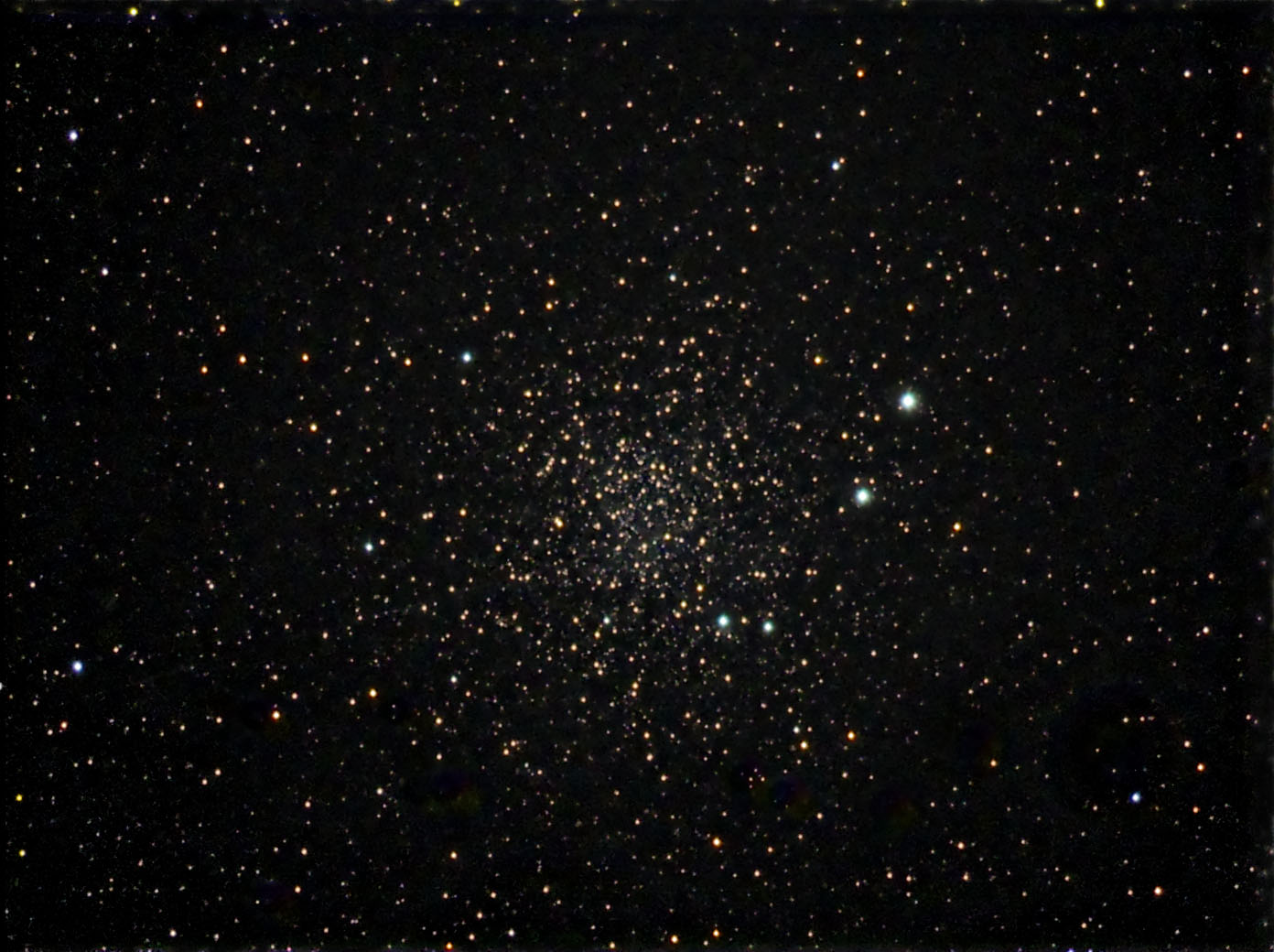|

CLICK ON IMAGE
FOR FULL SIZE VIEW
Scope: C8 f/6.4; Location: Del Mar, CA;
12 July 2006; Camera: Artemis285
Exposure: 10 x 240 sec Luminance exposures with UV/IR Block Filter, 8 x 120 sec RGB
Processing: Images were captured Artemis Capture (as FITs). Aligned/stacked in Registax
3 and saved as FITS. Luminance and Color channels were scaled and rough color balanced in
Astroart. Central Gradient was removed in Astroart. Channels were co-registered in
Astroart. Curves and Levels were applied in Photoshop to optimize object
appearance. Final LRGB combine was done in Photoshop using Luminance Layering (or
LLRGB). G2V and atmospheric extinction color correction and final touches were done in Photoshop.
Noel's Actions - Space Noise reduction was used to smooth background noise on the
final result.
Final Image size is approximately 1392x1040.
This image was guided; North is up. NGC 6366 is a relatively open globular
cluster in the constellation of Ophiuchus. It is a distance of about 11,700 light
years from Earth. NGC 6366 is considered somewhat rich in the heavier elements.
It also is visible through interstellar dust which absorbs the shorter blue and
green wavelengths. Both of these factors contribute to the red appearance of the
cluster. NGC 6366 is a lesser cousin to the 7 Messier globulars also located in
Ophiuchus (M9, M10, M12, M14, M19, M62, M107). Horizontal FOV is 22'
Image Center is approximately - Equatorial 2000: RA: 17h 27m 44s Dec: -05°04'34"
|

